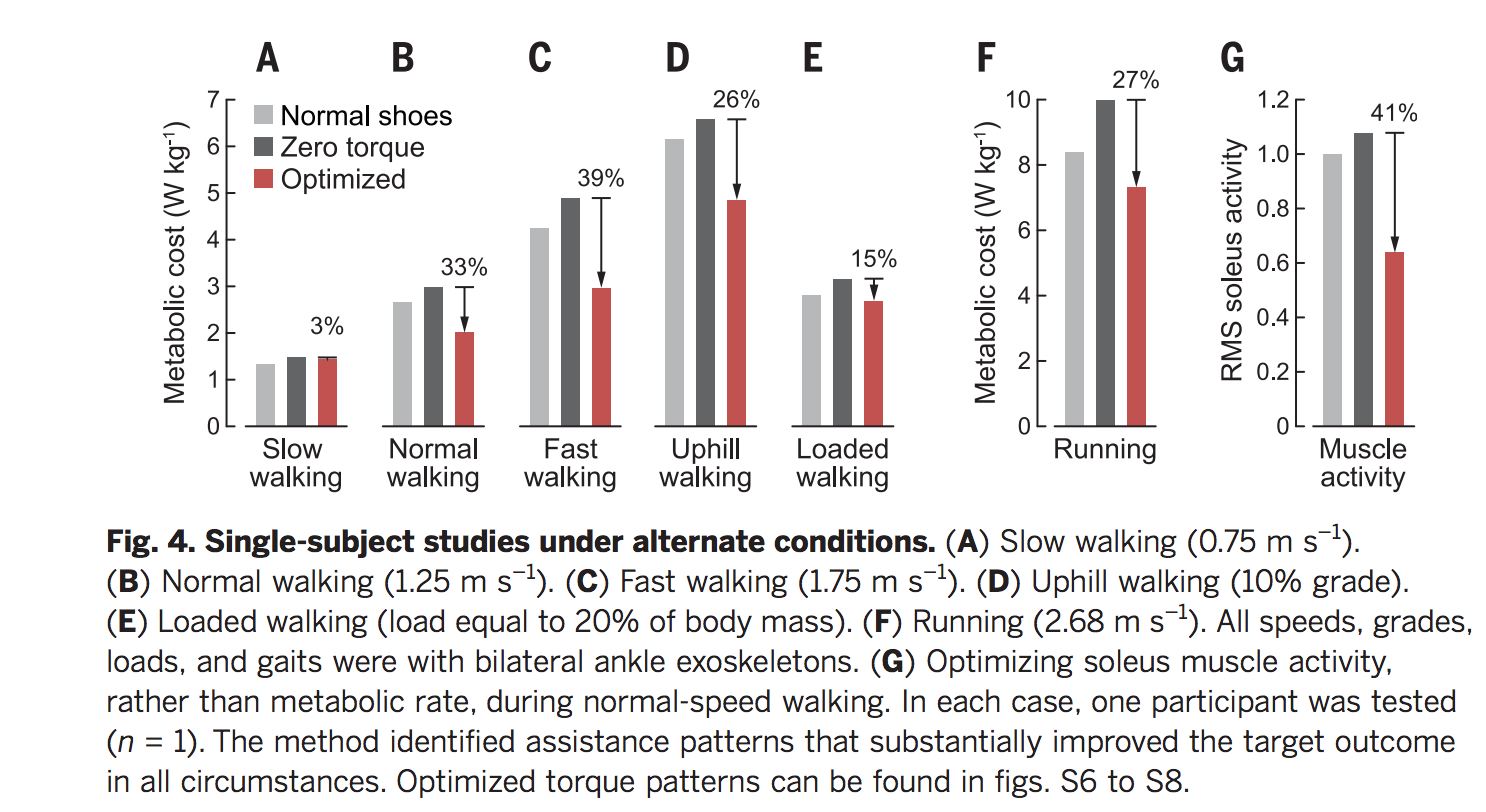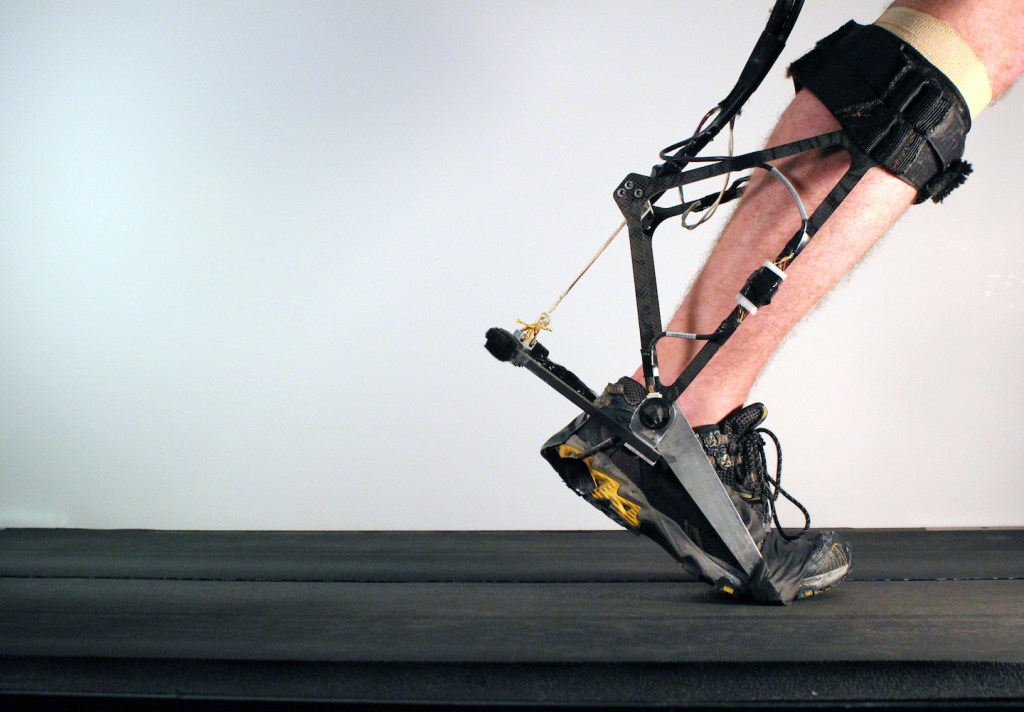Exoskeletons—wearable robotics that can help aid mobility—are quickly evolving to become even more mind-blowing. Now they can auto-adjust to match a specific wearer’s needs, possibly enabling basketball players to jump twice as high some day, according to new research published Thursday in Science.
“I could see them in the far future being used to make sports more exciting,” said Kirby Witte, a mechanical engineering PhD candidate at Carnegie Mellon and co-author of the new study. “You could have people with exoskeletons slam-dunking on hoops twice as tall as they are now, doing crazy, sci-fi stuff.”
Videos by VICE
Witte and her colleagues developed a new system to allow exoskeletons to quickly measure and learn the best way to help the wearer. Using 11 healthy volunteers, they had people walk wearing an ankle device on one foot. The device was hooked up to a computer where it measured the wearer’s metabolic output, and cycled through dozens of tiny adjustments until it found the one that caused the lowest metabolic output.
This process reduced the wearer’s energy expenditure by 24 percent on average by adjusting to reduce the amount of torque needed to move, compared to when the device was turned off, according to the study. They tested it out in multiple situations, from walking uphill to running to slow walking, and each time the device was able to reduce the amount of energy the person needed.
The wearers typically couldn’t notice the difference, Witte said, unless the researchers suddenly shut off the exoskeleton, making them aware of how much of a boost they were actually getting.

Witte told me as long as there is a measurable desired outcome (such as top speed or metabolic rate), the method used in her study could be applied to make exoskeletons better meet anybody’s needs.
Finding a way to adjust exoskeletons to each individual has been a big hurdle in the field, said Phillipe Malcolm, a biomechanics professor at the University of Nebraska, who wrote a review of the paper in Science.
“If you design something that’s purely a machine, then you can more or less simulate how it’s going to work,” Malcolm told me. “However, wearable robotics like exoskeletons and prosthesis interact with the person, and it’s not yet possible to predict how the person is going to react to a device. So we need these types of machine learning approaches.”
Witte said exoskeletons can be used to help people with reduced mobility get around more easily, or help people in specific jobs be able to lift heavy weights using less energy. There are even exoskeletons in development to help people with paralysis walk again.
“We’ve seen better results than anyone has ever gotten before,” Witte said. “If other people start applying this method, everyone is going to start doing a lot better. I’m really excited to see where it goes.”
Get six of our favorite Motherboard stories every day by signing up for our newsletter .
More
From VICE
-

Gemini on a smartphone – Photo Illustration by Thomas Fuller/SOPA Images/LightRocket via Getty Images -

(Photo by Shirlaine Forrest / WireImage via Getty Images) -

Screenshot: Konami -

Screenshot: Embark Studios
